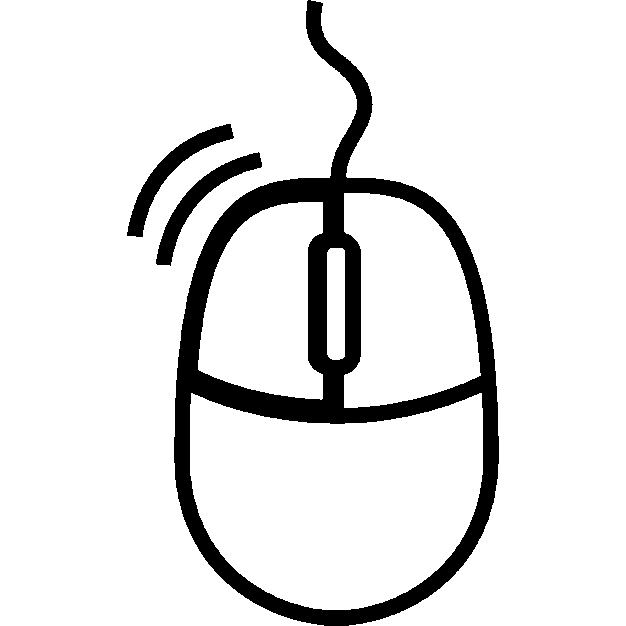level ZERO
The Basement : ...
The Basement : ...
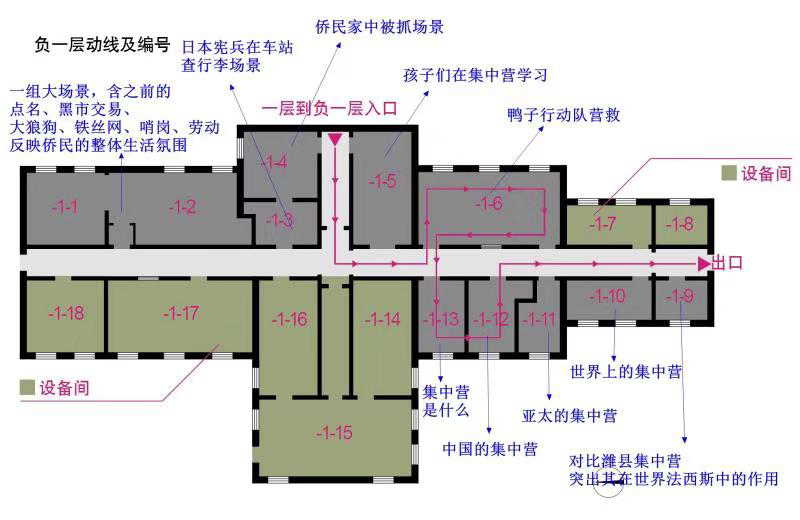




... written on the information boards :
✍... the information boards visible in the (above) photos have been recopied in order to facilitate the reading ... (enjoy)
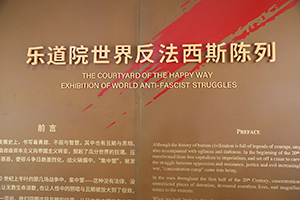
PREFACE
The development history of human civilisation is written with bravery, perseverance and wisdom, as well as ugliness and darkness. In the early 20th century, big powers transformed from laissez-faire capitalism to imperialism and created an upsurge of dividing China. Suppression and resistance, good and evil intensified the struggles. In the flames of wars, “concentration camps” were invented.
In the wars that filled up the upper half of the 20th century, concentration camps—a kind of unlawful, unrestricted detention venue—witnessed the perishment of countless lives and extremely enlarged the darkness and ugliness in human nature.
When looking back upon this shady past, the Japanese concentration camps in China and the Asia-Pacific region and those in other places in the world are tough-provoking. What kind of hatred would make mankind invent such inhumane concentration camps. And what kind of conflicts would cause people to kill each other?
Past experience, if not forgot, is a guide for the future. The peace that we enjoy today has not come easily. Only by remembering history can we cherish peace more and steadfastly keep on walking on the anti-fascist road.
DISASTER HAS COME
In December, 1941, Japanese navy conducted a sneak attack on Pearl Harbour, causing the Pacific War to break out. The U.S., the U.K., the Netherlands, Australia and Canada chose to fight together with Chinese people, who had been fighting against Japanese imperialism alone for four years. The Anti-Fascist Alliance thus took shape, declaring war against fascism. The sudden war caught a lot of foreign expatriates from the allied countries in China unprepared. They were involved in the disaster before they could retreat. Japanese aggressors wantonly tracked down and arrested diplomats, missionaries, teachers and residents from the allied countries in areas occupied by the Japanese army and threw them into concentration camps.
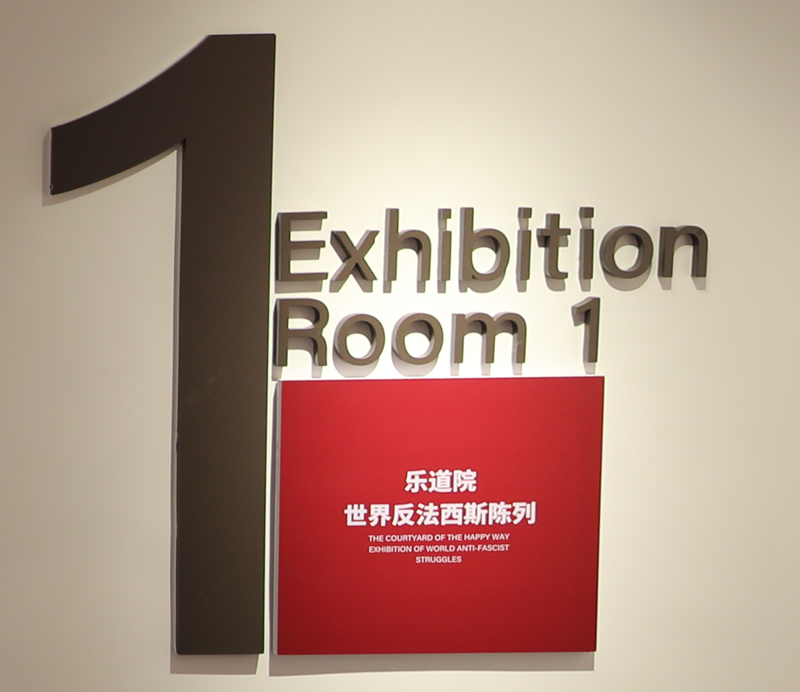
THE COURTYARD OF THE HAPPY WAY
EXHIBITION OF WORLD ANTI-FASCIST STRUGGLES
ORIGIN OF THE NIGHTMARE
War is the most violent means to resolve disputes in the history of human civilization. In wars, human nature will be distorted and deprived. To achieve the ultimate victory, the darkest side of people will be demonstrated as they attempt to harm their opponents by any means.
Before modern times, the treatment for the "defeated" or the "prisoners of war" was simple and crude. They were released, enslaved, or ruthlessly killed. After the industrial revolution, human beings put on the coat of "civilized society", and the new concept of "total warfare" began to emerge. As a result, "concentration camp" ― a term which is still the pain spot for human civilization today, appeared for the first time in the 1900s.
THE PRODUCT OF COLONY
At the end of the 19th Century and the beginning of the 20th Century, colonists from the UK fought with the descendants of Dutch settlers on the land of South Africa for three years. The war on the African continent cost a huge price of the "the empire on which the sun never sets", which started to decline day by day. To escape from the quagmire of war as soon as possible, the UK "creatively" invented the "concentration camp", the cruelest and ugliest "cancer" in human civilization.
In 1899, to compete for resources in southern Africa, a war broke out between the British and the Boers (descendants of Dutch settlers). This war on the land of South Africa lasted until 1902 and cost the British dearly. Due to the heavy casualties of the army and the serious deficit of the budget, the British government had to contract strategically; this ended its history of overseas expansion for more than 100 years.
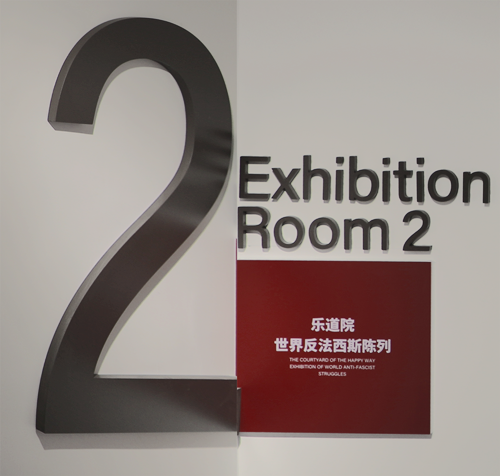
SCARS OF CHINA
CONCENTRATION CAMPS IN CHINA
Since the launching of the "September 18th Incident" in 1931 to being defeated in 1945, the Japanese imperialists brought tremendous disaster to the Chinese people through their aggressive war against China, which lasted for 14 years. But they were never able to conquer this great nation.
In the face of the unyielding struggle of 400 million Chinese, Japanese imperialists used various cruel means to persecute the Chinese army and people and the anti-fascist allies from around the world, including the establishment of concentration camps, the detention of prisoners of war and plundered Chinese laborers. In addition to the POW camps and shelter camps set up in various parts of China, the Japanese army also sent many people to designated places for forced work, so the Japanese concentration camps were not as ill reputed as Auschwitz Concentration Camp. However, the scale and cruelty of Japanese concentration camps were not second to their counterparts established by German Fascists.
DEMON'S DETENTION
The gunshots at Lugou Bridge started the all-round Anti-Japanese War of the Chinese nation. At the beginning of the war, with advanced weapons and equipment, the Japanese army invaded and occupied a large area of land in China. In order to effectively control the occupied areas and enslave, instigate rebellion with, suppress and kill the Chinese army and people captured. Japanese imperialists began to set up concentration camps in Chinese territory they had occupied. Later, with the outbreak of the Pacific War, the Japanese army had set up a number of concentration camps in other occupied areas in China to detain prisoners of war and migrants.
After the all-round outbreak of Anti-Japanese War, relying on the strong military force. the Japanese army quickly occupied a large part of China's territory, including East China, North China and South China in succession. In order to effectively control the occupied areas and suppress the resistance of the Chinese people, the Japanese aggressors began to exercise brutal governance over the occupied areas.
WHO ARE THE VICTIMS ?
The Japanese army had set up many concentration camps in China, and the composition of the detained was complex.
There were prisoners of war from the Chinese army and the allied forces who later became laborers, migrants from allied countries staying in China in wartime. Among the Chinese prisoners of war, there were include anti-Japanese armed forces led by the Communist Party of China, central army and local army of the Kuomintang government who were no longer trusted. There were also a huge number of anti-Japanese civilians and innocent people detained in those camps.
According to nationality and status of the detained, Japanese concentration camps can be divided into two categories:
POW camps for the allied forces, such as Fengtian POW Shelter Camp and its affiliated No.1 Shelter Camp in Zhengjianin, Jinlin Province; The eight POW camps for the allied forces in Hainan; and the POW camps for the allied forces at Tsai Tsz Mui, Sham Shui Po, Argyle Street, Ma Tam Wai and Kai Tak Airport in Hong Kong.
Concentration camps for migrants from allied countries such as Shanghai Concentration Camp for Migrants from Allied Countries and Weihsien Concentration Camp for Migrants from Allied Countries in Shandong, and Stanley Concentration Camp in Hong Kong.
Among all concentration camps, Weihsien Concentration Camp for Migrants in Shandong Province and Fengtian POW Shelter Camp in Shenyang, Liaoning Province were of great influence. The former mainly detained U.S.,U.K., and Dutch migrants who resided in North China, while the later detained U.S., U.K., Dutch and Australian prisoners of the Pacific War. Mainly officials and senior generals of the United States, United Kingdom and other countries captured in the Pacific battlefield were also detained here, including:
Jonathan Wainwright - [click on the smiley] - 
Lieutenant general of the U.S. Army and commander in chief of the U.S. Army in the Philippines.
Edward King - 
Major general of the U.S. Army and commander of the U.S. Army in Bataan Peninsula.
George Moore - 
Major general of the U.S. Army and commander of U.S. seaport defensive in the Philippines.
Arthur Percival - 
Lieutenant general of U.K. army and commander in chief of Malaya.
Sir Shenton Thomas - 
Governor of the U.K.'s Straits Settlement.
Sir Mark Young - 
Governor of the U.K.'s Colony of Hong Kong.
Also detained here were Governor-general Stachouwer -  of the Dutch East Indies, Lieutenant general Hein Ter Poorten -
of the Dutch East Indies, Lieutenant general Hein Ter Poorten -  of Dutch army, Major general Bakker, director of Dutch Office of War Mobilization, Major general Jacob J. Penman, the commander of the Bandung District in West Java, and other allied generals and officials of India and Australia.
of Dutch army, Major general Bakker, director of Dutch Office of War Mobilization, Major general Jacob J. Penman, the commander of the Bandung District in West Java, and other allied generals and officials of India and Australia.
HELL FILLED WITH TRAGEDIES
In fact, the Japanese army began to enslave and torture POW laborers from the moment they were captures. The general treatment the Japanese would adopt to deal with the wounded and rebellious was killing. On the way to the concentration camps, the Japanese army would not provide enough water, food and medical treatment, nor would they treat the prisoners of war in accordance with international law. As a result, many prisoners of war died of illness and hunger, or even were brutally killed. After entering the concentration camp, they would be abused by the Japanese army.
The Japanese concentration camp exercised prison management over the prisoners of war, making them live a prison-like life. Beiping Concentration Camp was built on former Xiyuan Barrack of Qing government. Luoyang Concentration Camp was built on former Xigong barrack of warlords, Shijiazhuang Concentration Camp used to be the south barrack of the Japanese army, and the concentration camps in Zhengzhou and Kaifeng used to be prisons. In order to manage the prisoners of war, the Japanese army also built walls, installed power grids, constructed watchtowers, and strengthened the vigilance. All the prisoners detained in the concentration camp were deprived of their personal liberty and were forced to work every day.
Most of the Japanese concentration camps only provided two meals a day and the meals were merely sorghum rice, cornmeal and salted vegetables. Manu prisoners didn't even have chopsticks, so they had to use branches as chopsticks. The Japanese army provided little water to the prisoners, making them suffer from thirsty. Their cloths were dirty and shabby, and most of them were covered in rags. As for the buildings of the concentration camps, most of them were made of wooden boards, or even open-air straw mats. The prisoners could only squeeze in such buildings, suffering from the poor sanitation condition.
The POW laborers in the concentration camps were forced to do heavy physical work every day by the Japanese army. Since the POW laborers suffered from starvation, they had poor physique. They still had to work when disabled or sick, and could be reprimanded, beaten or even killed randomly by the Japanese army.
POW laborers in concentration camps were often killed by the Japanese army, who used prisoners of war as live targets when practicing bayonet charge, or send them to secret institutions such as Detachment 731 -  for vivisection and germ warfare experiments.
for vivisection and germ warfare experiments.
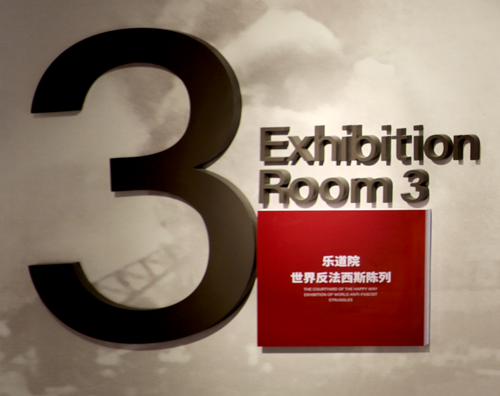
PROLONGATION OF WAR
CONCENTRATION CAMPS IN ASIA PACIFIC
In the Second World War, the Asian and Pacific battlefields with China and Myanmar as the core battlefields were the frontlines of the world anti-fascist alliance against Japanese imperialism. At the beginning of the war, the Japanese army occupied a large area of land in China, Southeast Asia and the Pacific region, captured many officers, soldiers and migrants from allied countries, and threw them into local concentration camps or concentration camps set up in the occupied areas throughout the Asia Pacific for cruel labor and abuse.
On the contrary, although the anti-fascist alliance also set up POW camps for the purpose of detaining war criminals, it always treated these war criminals with humanity in accordance with international law. It tried to transform these prisoners of war and help them regain humanity through positive means.
NEED OF THE WARFARE
In the early days of the Pacific War, the world anti-fascist allies were defeated. Malaya, Singapore, Philippines, Dutch East Indies (Indonesia), Wake Island and Guam were successively fell into the hand of the Japanese army. A large number of allied officers and soldiers became prisoners of war. They were taken on board of ships and transported to places like Japan, Korea, mainland China, and Taiwan, China for detention.
In addition to Japanese territory like Osaka, Tokyo, Hakodate, Fukuoka, Nagoya, Sendai, Hiroshima and countries like North Korea, Java, Thailand, Philippines, Malaya. Japanese army had also set up large and small POW camps on Chinese territory like Shanghai, Taiwan, Hong Kong and Fengtian (Shenyang).
ANGEL AND DEVIL
During the Pacific War, the world anti-fascist alliance conducted a most courageous fight against Japanese imperialism. This war was like a battle between angels and devils. On the one hand, the Japanese army exercised their savage acts constantly, as they cruelly abused, even killed the captured allied officers and soldiers: on the other hand, the allies treated the Japanese prisoners who committed heinous crimes with humanitarianism. The good and evil of human nature were best reflected among the concentration camps and POW camps.
The first nightmare camp of U.S. prisoners of war on the Pacific battlefield was 'Capas Camp'.
In 1942, after the surrender of the U.S. army in the Philippines, the Japanese began to torture the prisoners of war cruelly. First, they forced the prisoners of war to walk from Bataan to Capas Concentration Camp in Tarlac.
The long distance between the two places and the horrible condition took the lives of more than 10.000 Filipino soldiers and 1.200 U.S. soldiers on the way. This was the infamous "Bataan Death March".
After being thrown into the Japanese POW camp, more than 26.000 people died. Most of them had been arranged to do heavy works and would be killed if their work was considered unsatisfactory. Many prisoners of war who got sick were directly thrown into the crematorium and burned to death.
According to the statistics of Linda Goetz Holmes, American journalist and research expert on Japanese war crimes and Nazi war crimes, from December 7th, 1941 to the end of 1942, a total of 36,260 U.S. soldiers and construction workers as well as 14,000 U.S. civilians were held by Japan an became prisoners of wars. Many of them (around 25.000) had been forced to do hard labor in the factories and mines in Japan. Forty Japanese companies, including Mitsui, Mitsubishi, Showa Denko, Nippon Steel and Kawasaki Heavy Industries, had forced these whites to work for them for free. Many of these laborers were tortured to death.
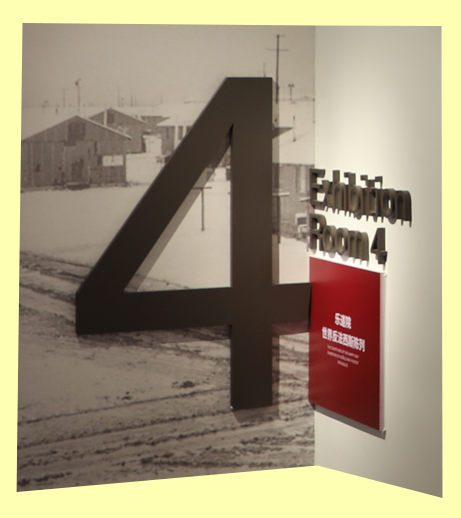
INDELIBLE MEMORY
CONCENTRATION CAMPS AROUND THE WORLD
Numerous concentration camps had been set up around the world, among which, the ones set up by Nazi Germany were the cruelest. During the Second World War, Nazi Germany carried out racism on the continent of Europe, and arrested and massacred Jews and anti-fascists. They set up many concentration camps in Germany and occupied areas to carry out brutal "ethnic cleansing", and millions of people lost their lives in those concentration camps. This was the darkest page in human history. Those concentration camps were like hell, and the long-lasting and tragic massacre is still the deep pain of all mankind to this day.
SAD CRIES OF HUMAN BEINGS
During the Second World War, Nazi fascists set up many death camps in Germany, Poland and other places such as Dachau Concentration Camp, Auschwitz Concentration Camp, Sachenhauser Concentration Camp etc., to detain political prisoners, prisoners of war and Jews. ( ... ?) to set up extinction facilities like gas chambers and crematoriums in the concentration camps. Millions of people were (... ?)
Auschwitz Concentration Camp, known as the "factory of death", is located in Auschwitz, a small town in southern Poland. During World War II, millions of people had been imprisoned in Auschwitz Concentration Camp, most of them Jews, and at least one million of them lost their lives there. Auschwitz Concentration Camp not only possessed gas chambers for most killings, but was also equipped with crematoriums which were capable of burning thousands of bodies per day. When Auschwitz Concentration Camp was liberated on January 27th, 1945, by the Soviet Army, the hair of the "dead" was found to weigh several tons.
JUSTICE JUDGEMENT
(... ?)
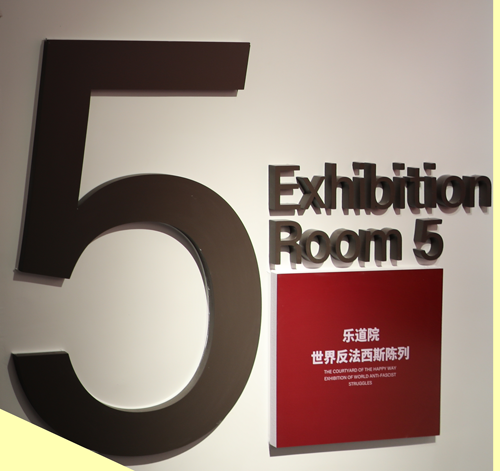
CONCLUSION
Looking back upon the concentration camps in China, the Asia-Pacific region and the world, we will find that they marked a history filled with blood, tears and sadness. On the one hand, they represented the brutality in humanity; on the other hand, they were part of the unremitting anti-fascist struggles. By engraving this history in mind, we will always be alerted and steadfastly walk on the anti-fascist road.
Likewise, Le Dao Yuan in Weihsien is a monument in the magnificent anti-fascist war, recording the Japanese imperialism’s imprisonment of Western expatriates in China. It saw the darkness, but also eulogises the unity of the peace-loving Chinese people and the just forces in the world. Le Dao Yuan witnessed the contest between good and evil, shining with the glory of mutual assistance and cooperation in human nature.
Nowadays, the former site of Weihsien Le Dao Yuan, also known as the concentration camp for Western expatriates in China, acts like a bridge built with the 100-odd-year Eastern and Western exchanges and decades of common experience. This bridge links the past and the future, bringing Weifang, Shandong and even China closer to the world. It is the firmest rivet in the great vision of “constructing a Community of Shared Future for Mankind”.
#
#



